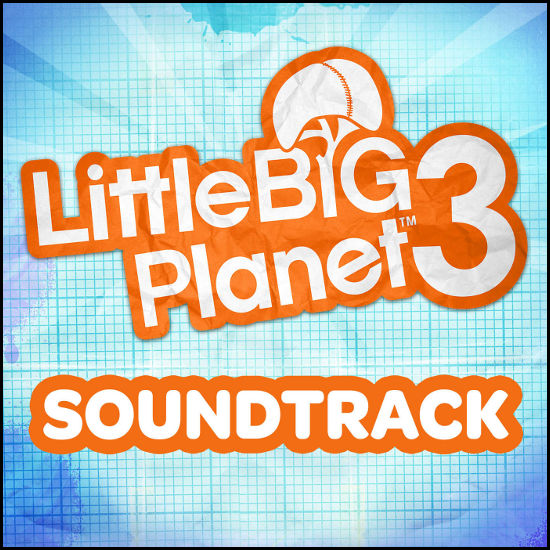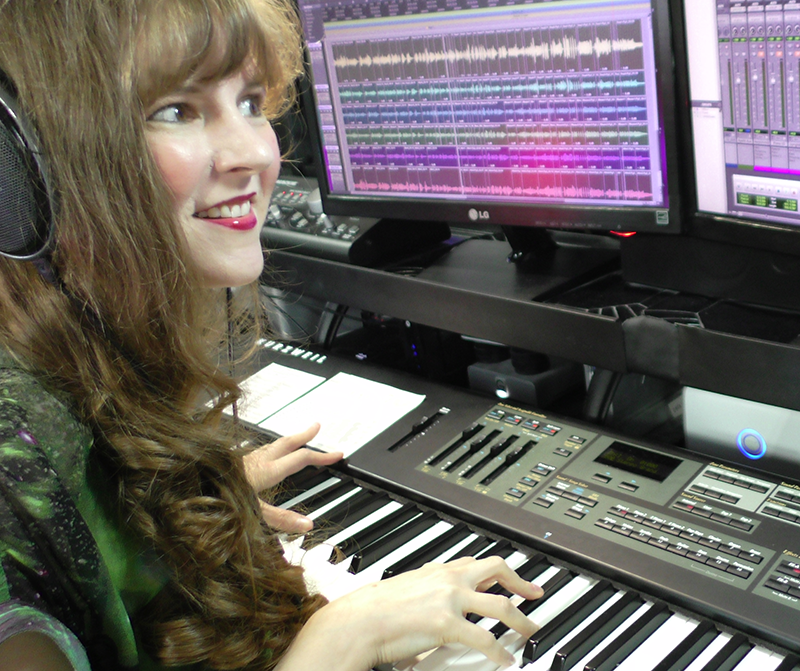
Featured Blog | This community-written post highlights the best of what the game industry has to offer. Read more like it on the Game Developer Blogs.
Here's a great musical trick that can only be pulled off when working in a Vertical Layering system. While linear music can fuse genres together, Vertical Layers can keep them both distinct & simultaneous for implementation purposes. Here's how it works.

 In this article I'd like to explore some of the creative processes that went into structuring the interactive music for tracks like LittleBigPlanet 3 The Ziggurat Theme and LittleBigPlanet 2 Victoria's Lab. I'll be sharing with you a fun technique that’s actually one of my favorite aspects of composing music in this interactive system. I’ve been a part of the music composition team for six LittleBigPlanet games, and over the course of those six projects, I’ve been asked to execute this particular technique a lot. It’s a great musical trick that can only be pulled off when you’re composing in a Vertical Layering system. Since the LittleBigPlanet music system is one of the most complex examples of Vertical Layering, it really makes for ideal conditions in which to execute this technique, which is…
In this article I'd like to explore some of the creative processes that went into structuring the interactive music for tracks like LittleBigPlanet 3 The Ziggurat Theme and LittleBigPlanet 2 Victoria's Lab. I'll be sharing with you a fun technique that’s actually one of my favorite aspects of composing music in this interactive system. I’ve been a part of the music composition team for six LittleBigPlanet games, and over the course of those six projects, I’ve been asked to execute this particular technique a lot. It’s a great musical trick that can only be pulled off when you’re composing in a Vertical Layering system. Since the LittleBigPlanet music system is one of the most complex examples of Vertical Layering, it really makes for ideal conditions in which to execute this technique, which is…
Composing in Two Simultaneous Genres
We’ll recall that Vertical Layering is the process by which a single piece of music is recorded into separate yet simultaneous audio recordings that each embody a percentage of the whole composition. This allows the music to be disassembled and reassembled into different instrument combinations during gameplay.
Last year I produced an instructional video that goes into the process in more depth:
Vertical Layering gives us the chance to write one track in two simultaneous musical genres. In traditional music composition, if we want to combine two genres of music in one track we can attempt to pull together a creative fusion, in which the styles are mixed together to create a result that isn’t quite one genre, and isn’t quite the other. Fusions can be exciting and original, but that’s not what we’re talking about here. The musical interactivity of Vertical Layering gives us the chance to keep the two genres distinct, and still incorporate them into the same piece of music. The track can switch up which layers are playing, and it’ll be in one musical genre in one moment, and then become another genre at the drop of a hat. It’s very cool, and a lot of fun for a composer – although it can also be hard for us to wrap our heads around, especially at first.
Let’s take a look at three examples of this technique in action. We’ll start with a couple of tracks from LittleBigPlanet 2, and then a more recent track from the latest game in the franchise – LittleBigPlanet 3.
LittleBigPlanet 2 Victoria’s Lab
In the “Victoria’s Lab” level from LittleBigPlanet 2, our world-famous hero, Sackboy, must do his best to navigate a perilous steampunk bakery, using cupcakes as weapons against evil robots made of teacups. All these wacky elements come together to create the typically whimsical awesomeness that makes LittleBigPlanet the lovable franchise it is. I composed the Victoria’s Lab music for LittleBigPlanet 2. Here’s a music video that includes the complete track, along with action from the Victoria’s Lab level of the game:
Victoria’s lab aptly demonstrates the “two simultaneous musical genres” approach. For instance, Victoria’s lab can switch from a whimsical lollipop style to a gritty orchestral/rock hybrid at any time. Here’s the whimsical lollipop:
And here’s the orchestral/rock hybrid:
It’s like the music has a case of multiple personality, and the audio team can use this to add distinctive character to locations and situations within the level – some areas benefiting from the cuteness of the whimsical style, others from the toughness of the rock. In order to make this happen, as game composers we have to keep the two styles balanced in our minds – compose them both separately, test how they work together, adjust the instrumental performances and fundamental organization so that the two styles can coexist in a way that makes musical sense, test the layers some more in various configurations, until all the layers seem to work well – both when played together and when played alone.
LittleBigPlanet 2 Eve’s Asylum

Now, while the Victoria’s Lab example presents a fairly extreme contrast in music styles, the music from the Eve’s Asylum level of LittleBigPlanet 2 shows off this technique in an even more dramatic way. The Eve’s Asylum level is set inside a giant tree, where a lady with an apple for a head runs a a highly-spiritual insane asylum. The music for this level is structured around two very distinct musical genres that are assigned to specific tasks.
The sparkling, surreal New Age music style works to enhance gameplay during relaxed exploration, and it also highlights the natural beauty of the giant tree. Here’s a taste of that:
On the flip side of the coin, the Boogie-Woogie style pays tribute to the Andrew Sisters and the age of swing, and the high-energy rhythms provide support for combat and perilous situations. Let’s listen to a little of that:
Okay, now here’s what it sounds like when the Vertical Layering music system transitions from one musical genre to the other in the Eve’s Asylum level of LittleBigPlanet 2:
What’s great about this technique is that it allows the music to morph into something completely different in a perfectly seamless way, without ever making the player overtly conscious of the transition, and without creating any artificial sense of demarcation where one style ends and another begins. The music is simply interacting with the gameplay, changing in a logical way as the player’s circumstances change. Now, let’s look at one more example of this technique, this time from LittleBigPlanet 3.
LittleBigPlanet 3 The Ziggurat Theme
 In the Ziggurat level, Sackboy explores a gigantic sanctuary that’s full of both grandly spiritual architecture and playfully eccentric machines. As a setting that already had a built-in duality, it seemed clear that the music should also have a similar sense of division – so I composed this Vertical Layering composition in two musical styles. The first was a traditionally designed Baroque-style fugue – a multi-voiced counterpoint composition built around the repetition and development of a single melodic theme. Here’s a snippet of that Baroque-style fugue:
In the Ziggurat level, Sackboy explores a gigantic sanctuary that’s full of both grandly spiritual architecture and playfully eccentric machines. As a setting that already had a built-in duality, it seemed clear that the music should also have a similar sense of division – so I composed this Vertical Layering composition in two musical styles. The first was a traditionally designed Baroque-style fugue – a multi-voiced counterpoint composition built around the repetition and development of a single melodic theme. Here’s a snippet of that Baroque-style fugue:
The second style was a quirky World Fusion in which log drums, upright bass and assorted percussion instruments worked together to have some fun with African, Latin, Polynesian and Jazz rhythms. Here’s an excerpt of those groovy world beats:
So, the music is essentially coming from the opposite ends of the cultural spectrum – a very strict and refined musical form on one side, and a very groovy and uninhibited style on the other. Now, watch how the music system added layers during this gameplay sequence in the Ziggurat level of LittleBigPlanet 3:
Vertical Layering is a tremendously flexible composition technique that allows a game composer to incorporate two simultaneous musical genres into a single track. We can use the two distinctly-different genres separately, and then combine them to create dramatically different musical effects. It’s a fun technique, and I hope that you’ll give it a try in your own work. Let me know in the comments if you’ve ever tried to combine two musical genres using Vertical Layering, or if you’re planning to try it in the future!
 Winifred Phillips is an award-winning video game music composer whose most recent project is the triple-A first person shooter Homefront: The Revolution. Her other credits include five of the most famous and popular franchises in video gaming: Assassin’s Creed, LittleBigPlanet, Total War, God of War, and The Sims. She is the author of the award-winning bestseller A COMPOSER’S GUIDE TO GAME MUSIC, published by the Massachusetts Institute of Technology Press. As a VR game music expert, she writes frequently on the future of music in virtual reality video games.
Winifred Phillips is an award-winning video game music composer whose most recent project is the triple-A first person shooter Homefront: The Revolution. Her other credits include five of the most famous and popular franchises in video gaming: Assassin’s Creed, LittleBigPlanet, Total War, God of War, and The Sims. She is the author of the award-winning bestseller A COMPOSER’S GUIDE TO GAME MUSIC, published by the Massachusetts Institute of Technology Press. As a VR game music expert, she writes frequently on the future of music in virtual reality video games.
Follow her on Twitter @winphillips.
Read more about:
Featured BlogsAbout the Author(s)
You May Also Like







